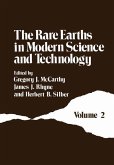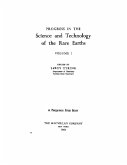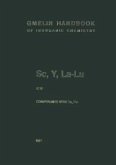The possibility of stimulated light emission was discussed by Einstein in 1917, eight years before the quantum-mechanical description of energy levels of many-electron systems. Though it is imperative to use samples having optical properties greatly different from the stan dard continuous spectrum of opaque objects ("black body" radia tion) it is not always necessary to restrict the study to monatomic entities. Thus, spectral lines can be obtained (in absorption and in emission) from lanthanide compounds, containing from one to thir teen 4f electrons going from trivalent cerium to ytterbium, that are nearly as sharp as the ones from gaseous atoms. However, the presence of adjacent atoms modifies the simple picture of an isolated electron configuration, and in particular, it is possible to pump excited levels efficiently by energy transfer from species with intense absorption bands, such as the inter-shell transitions of other lanthanides and of thallium(I), lead(II) and bismuth(III) or the electron transfer bands of the uranyl ion or other complexes. On the other hand, it is possible to diminuish the mUlti-phonon relaxation (competing with sharp line luminescence) by selecting vitreous or crystalline materials with low phonon energies. Obviously, one cannot circumvent the conservation of energy by lasers, but they may have unprecedented consequences for the future by allowing nuclear fusion of light elements, effects of non-linear optics and time-resolved spectroscopy, besides the more conventional applications of coherent light beams with negligible angular extension.
Dieser Download kann aus rechtlichen Gründen nur mit Rechnungsadresse in A, B, BG, CY, CZ, D, DK, EW, E, FIN, F, GR, HR, H, IRL, I, LT, L, LR, M, NL, PL, P, R, S, SLO, SK ausgeliefert werden.









